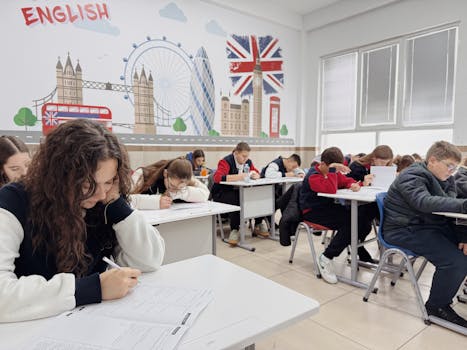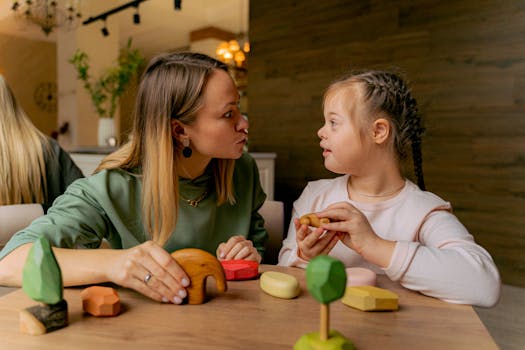A Wild, Untamed Classroom: Forget the Factory
Chuck the rigid, assembly-line classroom paradigm. Picture, instead, a vibrant, teeming ecosystem – a chaotic symphony of learning styles, personalities, and ideas, humming with kinetic energy. Uniformity, the traditional approach's obsession, strangles intellectual growth. Embrace the exhilarating unpredictability; the glorious, messy ferment of a flourishing learning environment. Collaborative norm-setting empowers students; they're architects of their learning space, not passive tenants. This shared ownership breeds responsibility, fostering collective triumph far surpassing the sterile, top-down regime of pre-packaged curricula. Student-led progress evaluations, a radical departure from the staid grading system, flip the assessment paradigm on its head; students become active participants in charting their academic trajectory.
Eschewing the Procrustean Bed of Uniformity
The notion that every scholar learns identically, at a uniform pace, is a preposterous fallacy. It's akin to jamming a square peg into a round hole with a sledgehammer. Instead of forcing conformity into a pre-ordained mold, deploy a diverse pedagogical arsenal to cater to individual learning preferences. Some thrive with hands-on exploration; others flourish with visual aids or auditory stimulation. Project-based learning empowers ownership; students formulate their own research questions, set ambitious goals, unearth resources, complete their projects, and present their findings with pride. They actively construct their knowledge, rejecting the passive absorption of pre-digested information. Think of a master gardener nurturing a diverse garden, each plant demanding unique care to reach its full potential.
Calculated Risks: The Crucible of Educational Innovation
Educational innovation demands venturing beyond comfort zones, a defiant challenge to the established order, a relentless experimentation with novel approaches. Failure? Embrace it. Every stumble is a stepping stone, a precious lesson etched in experience. The flipped classroom model, for example, where lectures are consumed at home freeing class time for active engagement and problem-solving, offers a powerful example. Integrate technology creatively – interactive whiteboards, educational apps, virtual field trips – transforming the classroom into a dynamic, engaging space. Textbook drudgery and rote exercises are relics of a bygone era; the best learning often occurs beyond their confining walls.
Cultivating a Growth Mindset: Failure's Transformative Power
Traditional education's most insidious flaw? The crippling terror of failure. We must cultivate a "growth mindset," transforming mistakes into opportunities for growth and refinement. Failure becomes a catalyst for learning, not a punishment. Support, not condemnation, is the antidote to errors. Help students dissect their mistakes, understand their root causes, and correct their course. This fosters resilience, a genuine love of learning that transcends mere grades, and a deep sense of self-efficacy.
Gamification's Allure: Bridging the Gap to Real-World Relevance
Gamification transforms lessons into quests, challenges, and engaging experiences. Points, badges, leaderboards – these elements spark healthy competition and collaboration. However, true engagement stems from connecting learning to tangible, real-world applications. Let students devise solutions to genuine problems. Partner with community organizations or businesses, creating opportunities to apply classroom knowledge in practical settings. This infusion of relevance and purpose invigorates the learning process, fostering an engaging environment that empowers students and ignites their intrinsic curiosity.
Rekindling the Sacred Fire: A Contrarian's Guide to Teacher Renewal
Forget "job"; teaching's a vocation, a holy calling, blasted to cinders by standardized testing's pyre, the suffocating grip of administration, and a funding drought that'd make a desert bloom. This ain't your grandma's teacher's manual; this is a survival guide, a phoenix rising from the ashes of burnout. Self-preservation isn't selfish; it's survival. Ignoring the crackling flames of exhaustion harms you, yes, but it scorches your students too. Nourish yourself; find kindred spirits among your colleagues; seek wisdom from those who've trod this thorny path before you. Remember the initial spark – that incandescent joy of igniting young minds. Reignite that passion; it's your shield against the modern educational battlefield. Sharpen your pedagogical axe – it's your only weapon against the relentless march of mediocrity.
Unleashing the Kraken: Igniting Genuine Student Engagement
Quiet compliance? Bah! True student engagement isn't about stifling vibrant minds; it's about fanning the flames of curiosity, nurturing intrinsic motivation – creating a classroom where individuality thrives, not withers. Ditch the teacher-as-sage model; embrace the student as architect of their own learning. Collaborative learning isn't just some trendy buzzword; it's students wrestling with concepts, brainstorming solutions, learning from each other's strengths, honing their social-emotional intelligence – building the resilience they'll need to navigate the treacherous waters of life. The curriculum's crucial, granted, but knowing your students – their dreams, their anxieties, their unique learning styles – is the key to unlocking their potential. Build genuine rapport; earn their trust; tailor your pedagogy to meet their individual needs. This isn't just about teaching; it's about forming a powerful, reciprocal relationship, forging a bond of mutual respect.
Confronting the Hydra: Systemic Challenges and Bureaucratic Beasts
The educational landscape is a minefield of systemic injustices: inequitable resource distribution, the tyranny of standardized testing, and the labyrinthine bureaucracy that chokes innovation. This isn't a lament; it's a battle cry. Don't let the system's inertia extinguish your fire. Become a fierce advocate for your students, for your classroom. Use your voice – a clarion call against inequity – and devise creative workarounds for the bureaucratic Gordian knot. Forge alliances with fellow teachers, sharing innovative strategies, bolstering each other's spirits. You're not alone in this David-versus-Goliath struggle. Collective action, a symphony of shared purpose, can reshape the educational landscape. Imagine it – a collective striving, a collaborative force, like ants constructing an intricate, magnificent anthill – together, we can overcome the obstacles and build a brighter future for all learners. Understanding the hidden curriculum can be a significant advantage, as detailed in Ace the Ministry of Education Quiz: Decode the Hidden Curriculum (and Boost Your Score). Furthermore, embracing lifelong learning strategies, as explored in Essential Education: Hacking Your Brain for Lifelong Learning – Beyond the Textbook, is crucial for both teachers and students. This approach can significantly enhance the overall learning experience and foster a more dynamic and engaging classroom environment. The concept of a growth mindset is further explained in Growth Mindset: What It Is and Why It Matters.






